Wrocław Police Presidium
In the middle part of the Podwale embankment, between Świdnicka and Krupniza streets, there is a monumental building made of dark red brick that occupies an entire block. This is a beautiful example of the German interpretation of the Art Deco style, known as German Expressionism.

The Breslau Police Department (Polizeipräsidium) was established in 1809 and was originally located in the Palace of the Dukes of Legnica-Brzesk (Pałac Książąt Legnicko-Brzeskich) on Szewskiej Street. Over a hundred years, the department's staff grew to 2,300 employees, which were located in ten more buildings around the city. This created a lot of inconvenience and it was decided to build a new building where all the services could be located. Before the outbreak of World War I, the police administration acquired the area of Eichborn's garden and villa, which had been abandoned in 1907.
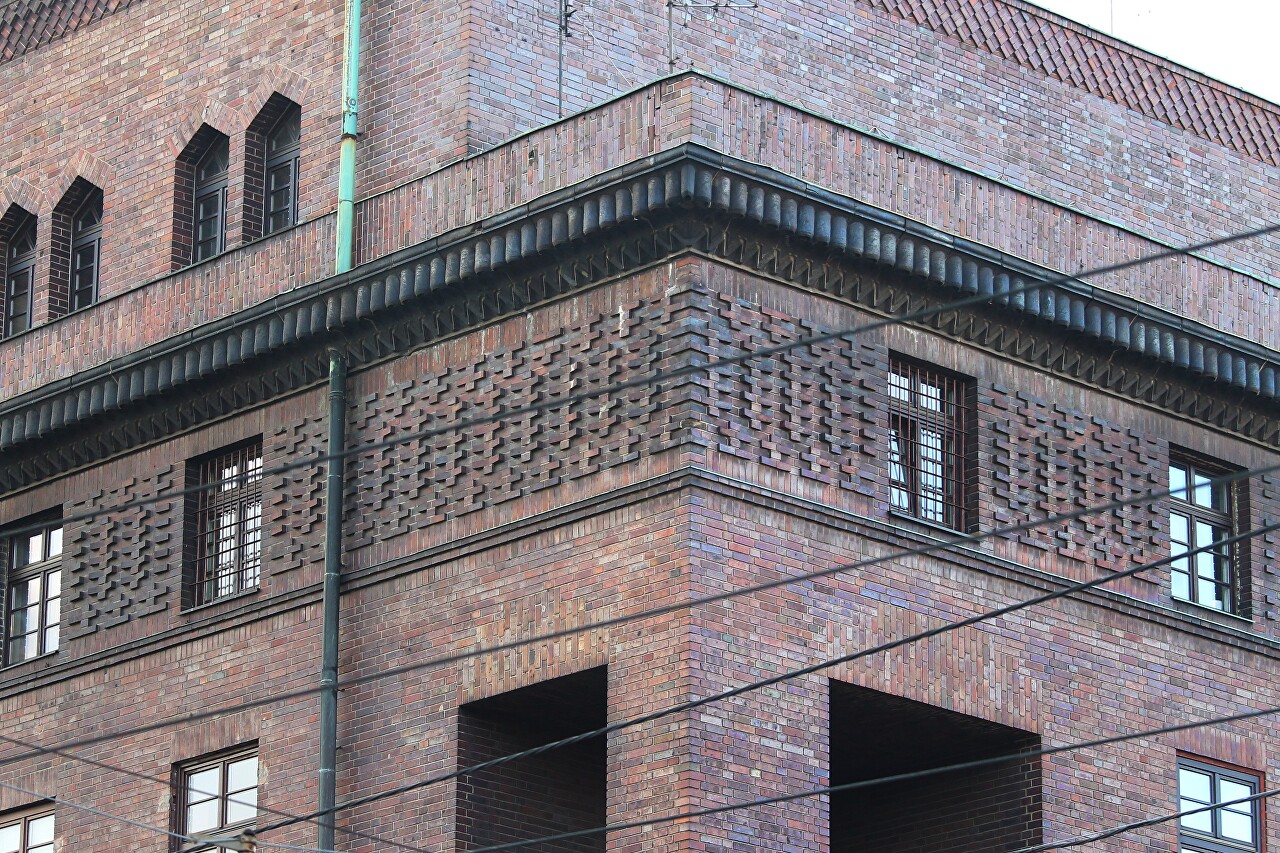
The first project of a luxurious Neo-Baroque building was prepared in 1917, but it was rejected by the Prussian Ministry of the Interior as too expensive. In 1919, Max Berg and Ludwig Moschamer proposed the construction of a four-story building with courtyards with a 25-story cylindrical tower. This project was also not accepted. Then two more projects were considered, and finally, in 1925, the project of the Wroclaw architect Rudolf Fernholz, made in collaboration with the state master builder Malwitz, was approved. The project took into account all the requirements of the customer: individual zones were designed for each department with a certain number and type of premises. The size of the rooms was determined by their functional purpose, their area and the number of windows corresponded to the status and the number of employees who were in them.
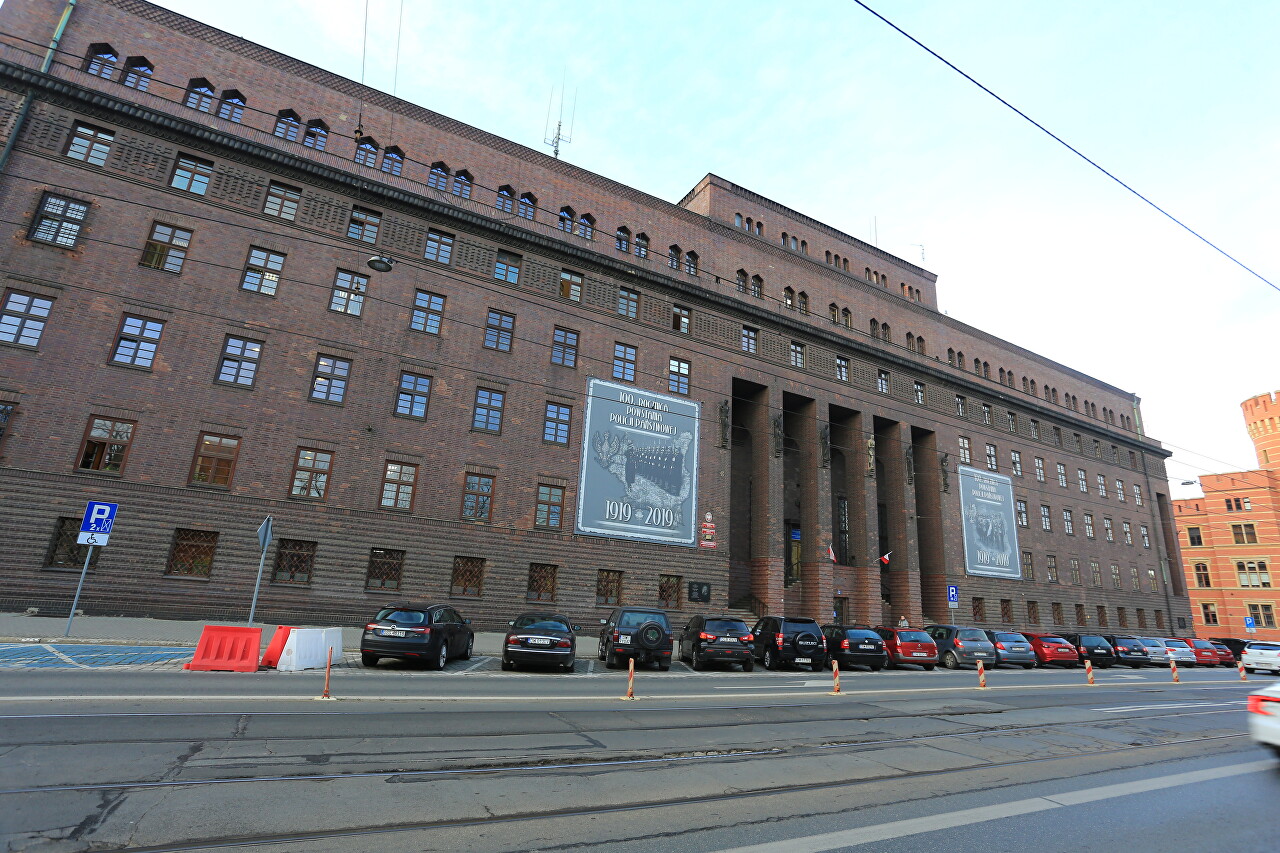
The construction work was carried out by the Prussian Civil Engineering Department, and it had to solve a number of problems. On the territory there were former park ponds and the remains of city fortifications, and solid soils were located at a depth of 11 meters. For the foundation, the builders scored 2,550 piles up to 12 meters long. However, the huge building was completed in less than two years. On January 11, 1929, the grand opening of the new Office took place. The building includes two facade buildings on the side of Podvale and Franciszka Ksawerego Druckiego-Lubeckiego streets, connected by four wings. Pairs of wings were connected by lintels, forming five courtyards, one large and four small.
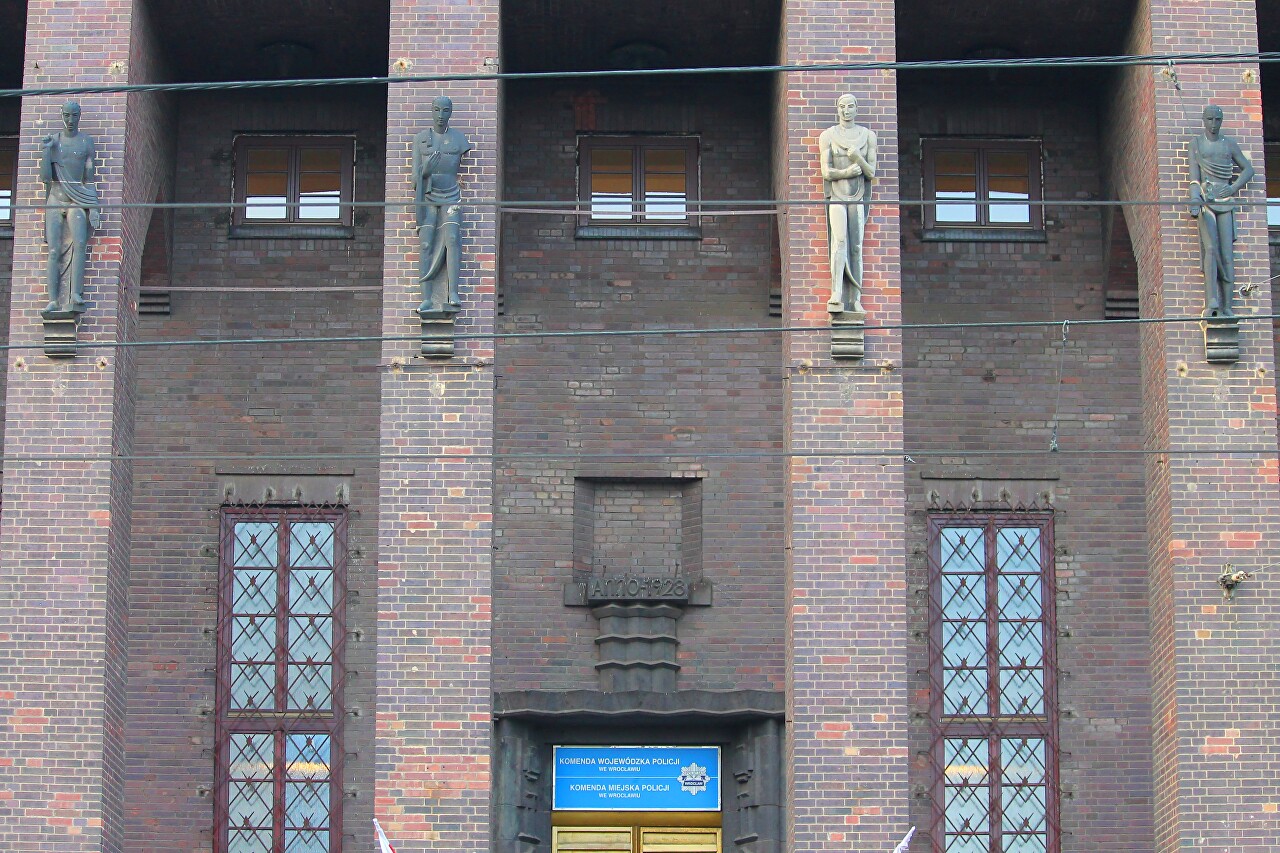
The main facade faces Podvale Street, it is the most representative. Its central element is a four-story entrance portico with four huge square columns over 13 meters high. The portico is decorated with six bronze sculptures in the Art Deco style, depicting the Roman emperors, their author Felix Kupsha. Behind the pillars is an external staircase leading to the main portal. The portal is decorated with terracotta reliefs also made by Kupsha. Other facades are much more modest. The building has 590 windows. The lobby, staircases, meeting rooms and the office of the President of the Police have been luxuriously decorated in the Art Deco style, while the rest of the office space has been stripped of decorations.
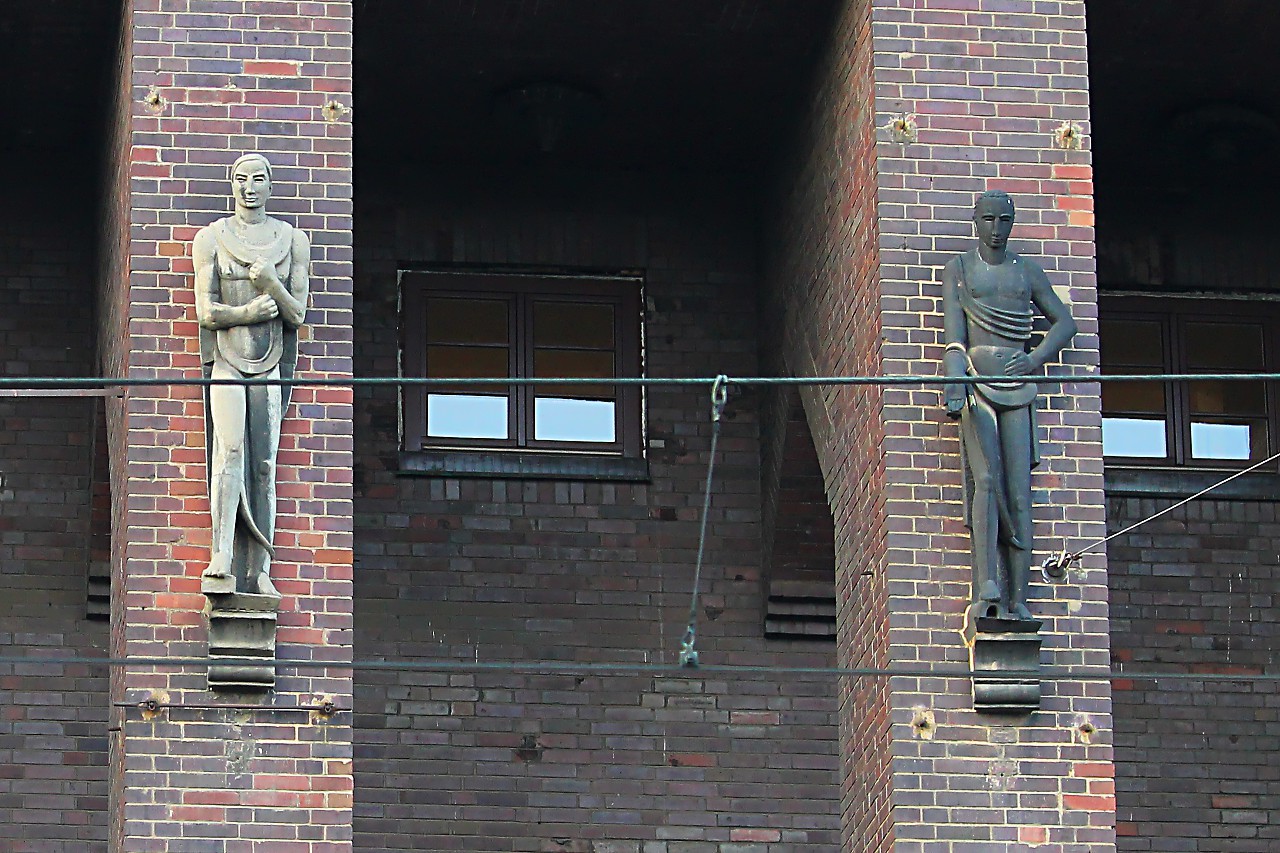
The building was equipped with modern technical facilities: one elevator system was designed for employees, the other for visitors, two independent telephone exchanges provided internal communication and communication with police stations, and there was a fire alarm system. In the main courtyard there is a large clock with a three-meter dial.
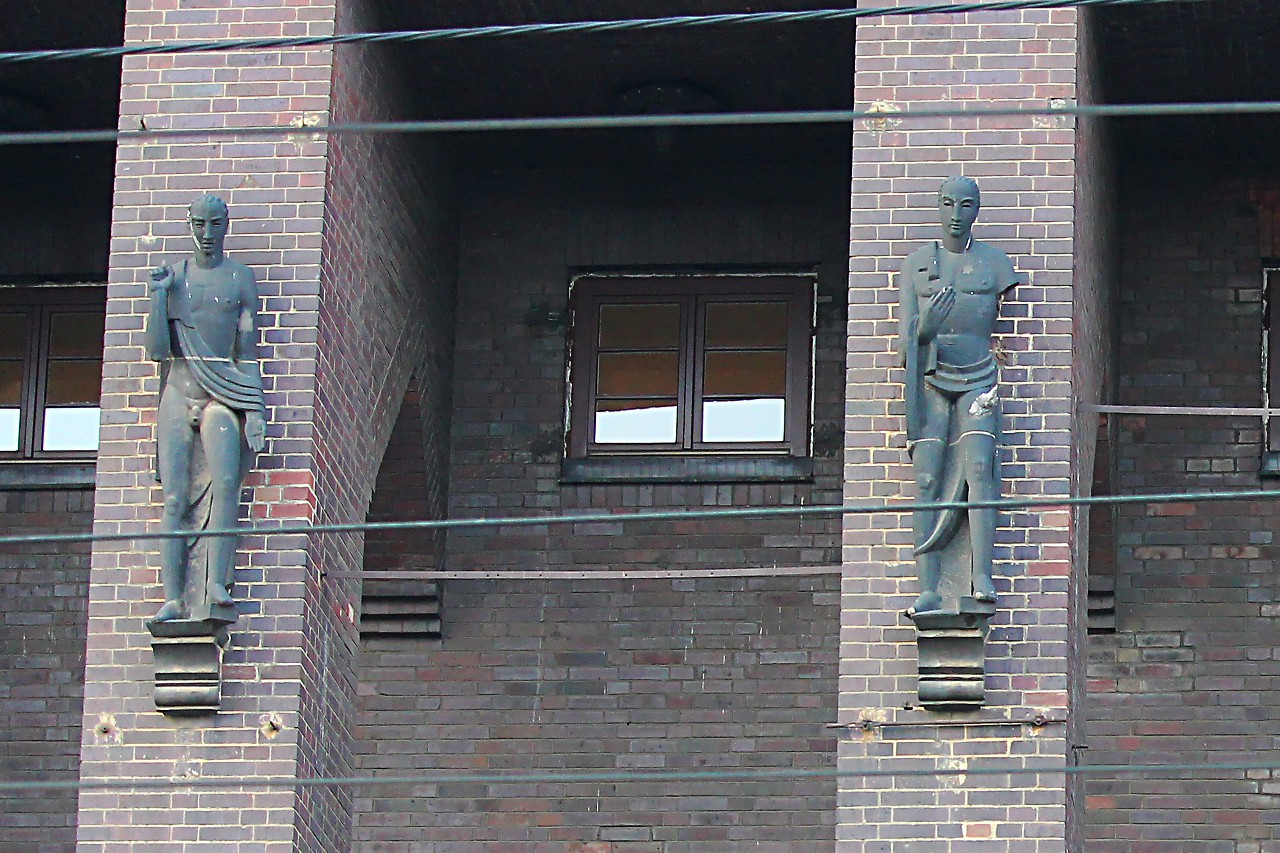
During the siege of Breslau by Soviet troops in 1945, the building was not damaged, and after Silesia became part of the Polish People's Republic, it also housed the police department. To this day, the building serves the same function, housing the Voivodeship Police Department and the Administrative Justice Department (Komenda Wojewódzka Policji we Wrocławiu Wydział Postępowanska Administracyjnych). The task of Policepresidium appears in the detective stories of Marek Krajewski, which take place in the interwar period, here was the office of the main character of the stories, criminal adviser Eberhard Mock.